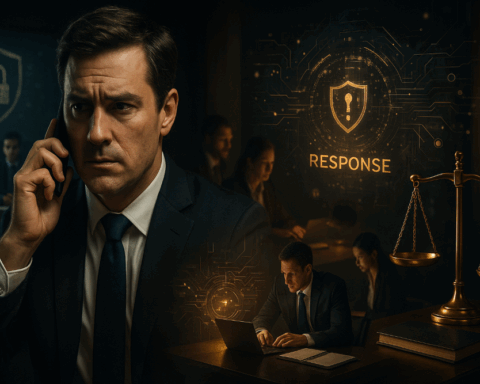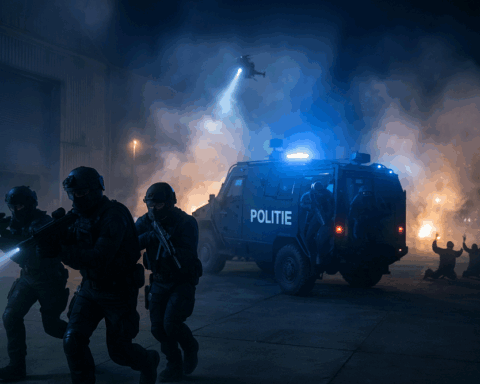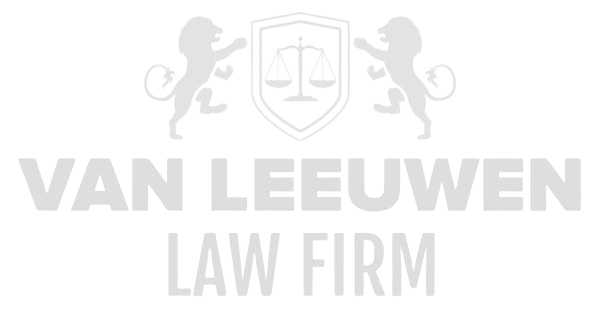The legal framework of the Dutch Municipalities Act (Gemeentewet) contains a set of exceptional powers designed to enable government authorities to act swiftly and effectively in response to acute threats to public order and societal safety. Article 175 forms a crucial cornerstone within this framework, as it empowers the municipal executive—specifically the mayor—to issue emergency orders in exceptional circumstances without the need to follow prior formal procedures. This authority is not merely theoretical; it arises from the practical necessity to address situations in which ordinary administrative mechanisms prove insufficient to prevent or contain escalating unrest or imminent danger. The exceptional nature of this instrument lies in its combination of immediacy and legal precision: it must be instantly deployable while simultaneously remaining defensible within a constitutional state that values the protection of individual rights. The exercise of this emergency power therefore requires a meticulous assessment of both factual circumstances and legal implications, carefully balancing societal interests against potential infringements on personal freedoms.
In circumstances where public order and safety are seriously endangered, a mayor may be confronted with situations ranging from large-scale gatherings with a potentially violent character to acute disasters or incidents causing severe social disruption. In such contexts, failure to act decisively may result in significant harm—both physical and societal—creating victims due to negligence or inadequate enforcement. The emergency order thus functions as a legal instrument of immediate intervention, capable of controlling risk, preventing escalation, and safeguarding the security of affected individuals as well as the broader community. At the same time, the application of Article 175 demands profound legal care, for careless use may give rise to serious legal disputes, liability claims, and public outrage. The intricate balance between necessary decisiveness and constitutional restraint makes the emergency order an instrument to be used only in the most extreme circumstances, subject to full justification and proportionality.
Application in Exceptional Circumstances
Emergency orders are primarily intended for situations in which ordinary administrative and enforcement mechanisms prove inadequate to avert acute threats to public order or safety. These may include incidents such as large-scale riots, civil disturbances, serious traffic accidents, or natural disasters, but also scenarios where a threat has not yet fully materialized yet is sufficiently concrete and imminent. The instrument is legally anchored in Article 175 of the Municipalities Act and expressly provides for immediate action against a defined group of individuals or organizations without the need to follow lengthy procedural steps. The scope of this power is therefore strictly delimited: it may only be invoked in situations of acute threat, when urgency and severity demand instant action.
The use of an emergency order entails a direct responsibility on the part of the municipal authority to conduct a careful analysis of the situation before intervening. The assessment must focus on the nature of the threat, the persons or entities involved, and the measures necessary to prevent harm or escalation. Proportionality is central: the order must not extend beyond what is strictly required to achieve its purpose. Each decision must be carefully reasoned so that, retrospectively, it can be demonstrated that the measures taken were justified and effective. In cases where individuals have already suffered harm due to unlawful or non-compliant conduct, an emergency order serves as a legal instrument to prevent further damage and restore control.
Article 175 also provides a bridge to more formal emergency regulations, such as those under Article 176 of the same Act. When a threat broadens or affects an indeterminate number of persons, the emergency order may serve as an interim measure while the formal emergency ordinance is being prepared. This dual function makes the emergency order both flexible and powerful: it can be enacted immediately yet integrated into a broader legal framework that ensures continuity in the maintenance of public order. The emphasis remains on rapid deployability, with the mayor independently determining the content and scope of the order, subject to a continuing duty to assess necessity and proportionality.
Enforcement Authority
The mayor’s enforcement authority under Article 175 is extensive and encompasses all orders deemed necessary to intervene directly in the face of imminent disorder. This means the mayor may autonomously decide which measures to implement, ranging from restrictions on movement and assembly to mandatory evacuations or specific behavioral directives directed at individuals or groups. The guiding principle is immediacy and effectiveness, with the option to mobilize the police and other enforcement bodies to secure compliance.
An order issued under Article 175 is inherently temporary and context-specific, focusing exclusively on the acute threat at hand. This requires continuous evaluation of the measures’ effectiveness and, where appropriate, modification to achieve the intended objective without unnecessary intrusion upon individual rights. Enforcement may take both administrative and criminal forms, thereby reinforcing compliance and providing a direct legal mechanism against non-compliant conduct. For clients who have already suffered harm as a result of others’ actions, such an order can mitigate further risk and strengthen the legal basis for compensation or preventive intervention.
The mayor must also consider proportionality and subsidiarity in the exercise of enforcement powers. Measures must be appropriate to the scale and nature of the threat, yet must not exceed what is strictly necessary to prevent escalation. The instrument must therefore be applied in conjunction with existing powers and legal provisions, ensuring that its use remains both legally sustainable and socially legitimate. The combination of immediate applicability, broad enforcement capacity, and legal accountability renders the emergency order an exceptionally powerful tool for safeguarding public order.
Relationship with Emergency Ordinance
Emergency orders maintain a close relationship with emergency ordinances, as in practice they often function as transitional instruments preceding broader regulatory measures. Whereas an emergency order targets a defined group of individuals or organizations, an emergency ordinance may be invoked when a threat affects the general public or an indeterminate group. The emergency order enables the mayor to act without delay while the drafting and adoption of a formal ordinance require additional procedural safeguards and time.
This interrelation between the emergency order and the emergency ordinance ensures continuity in public order enforcement. The order may be issued in advance of an ordinance to prevent immediate escalation and to impose focused, situation-specific measures. Simultaneously, it must always be ensured that such measures remain strictly necessary and temporary. The mayor bears responsibility for supervising implementation and coordinating with police and municipal services, ensuring that the transition from emergency order to ordinance occurs seamlessly and that public safety remains continuously safeguarded.
Furthermore, the emergency order operates as a legal safeguard against the loss of control in the face of acute threats, minimizing social disruption and mitigating risk to affected individuals. In cases where citizens have already been harmed by others’ actions, the order offers an immediate mechanism to prevent further escalation and facilitate enforcement. Its temporary and narrowly defined nature makes it an effective instrument that must be carefully aligned with the broader municipal strategy for public safety.
Proportionality
Proportionality constitutes a fundamental principle in the application of Article 175, determining the legal validity of any measure imposed under it. Measures may never extend beyond what is strictly necessary to manage the threat and maintain public order. Every decision must involve a thorough evaluation of its impact on affected individuals and a careful consideration of less intrusive alternatives. This principle safeguards individual rights and prevents excessive use of emergency powers.
The principle of proportionality also serves as a benchmark for legal scrutiny. The mayor and enforcement authorities must be able to demonstrate that the intervention was effective, targeted, and appropriate, and that no other measures could have achieved the same objective. In situations where individuals have already been harmed by non-compliant behavior, a proportionately imposed order may help restore lawful conditions and prevent further injury. At the same time, proportionality functions as a safeguard against arbitrary or excessive actions, thereby preserving the integrity of the rule of law.
Moreover, proportionality demands ongoing evaluation throughout the implementation of an emergency order. When circumstances change or the level of danger decreases, the order must be amended or revoked to avoid unnecessary infringements of fundamental rights. This requires close monitoring and a dynamic enforcement approach to preserve the balance between collective security and individual liberty. Thus, proportionality stands as a core component of both the legitimacy and the effectiveness of emergency orders in acute situations, where urgency and societal impact must be weighed with the utmost care.
Subsidiarity
The principle of subsidiarity is closely linked to the application of Article 175 and dictates that emergency orders may only be employed when other, less intrusive measures prove insufficient. This implies that the governing authority must first assess whether existing powers, such as minor order-issuing powers or provisions under the General Municipal Regulation, are adequate to manage the threat. Only when these measures fall short is the use of an emergency order justified. The principle requires a structured evaluation prior to intervention, emphasizing the minimization of infringement on individual rights and the prevention of unnecessary societal disruption.
Subsidiarity also serves as a legal safeguard against disproportionate use of authority. In situations where citizens are already disadvantaged by non-compliant behavior, the principle provides a framework to limit interventions to what is strictly necessary, thereby preventing further harm without imposing unnecessary restrictions. The mayor is required to justify the decision to issue an emergency order and can later explain the rationale to the municipal council or supervisory authorities. This not only ensures the effectiveness of the measure but also its societal and legal legitimacy.
The principle further demands that the application of an emergency order is continuously evaluated. If alternative solutions arise or the immediate threat diminishes, the measure should be adjusted or revoked. This dynamic application ensures that the instrument is not misused and that the balance between public order and individual freedom is maintained. Subsidiarity is therefore an essential criterion for the lawful and proportionate use of emergency orders, with each decision requiring careful justification and legal accountability.
Possible Restriction of Fundamental Rights
Article 175 may involve the temporary restriction of the fundamental rights of the persons concerned. In particular, freedoms protected by the Constitution, such as freedom of religion (Article 6), freedom of expression (Article 7, paragraph 3), and freedom of assembly and demonstration (Article 9), may, in exceptional cases, be temporarily limited. Such restrictions must be strictly necessary and aimed at controlling an acute threat, with careful consideration of proportionality and subsidiarity. Measures are always temporary and situational, so they do not exceed what is required to achieve the intended objective.
The framework of necessity and proportionality means that any limitations on fundamental rights must be thoroughly justified and legally defensible. For example, if a demonstration by a limited group of individuals threatens to escalate into serious disorder, an order may be issued targeting only that specific group, aimed at restoring order. This targeted approach prevents the rights of third parties from being infringed and limits the risk of unnecessary societal disruption. For citizens who have already suffered harm due to the actions of others, such an order can also provide protection against further infringements or risks.
Moreover, the application of fundamental rights restrictions requires continuous evaluation and supervision. The mayor and enforcement authorities must monitor compliance and assess the impact of measures. This ensures that restrictions remain proportionate, are timely adjusted or revoked when the acute threat diminishes, and that the rule of law is always upheld. The precise balancing of safety and freedom is crucial, particularly in situations where individuals have already suffered harm due to non-compliant behavior or face accusations as a result of escalation.
Criminal Liability for Non-Compliance
Failure to comply with an emergency order constitutes a criminal offense, as set out in Article 184 of the Criminal Code. This means that individuals or groups who ignore an order are exposed to sanctions, which may range from community service to imprisonment. Criminal enforcement strengthens the authoritative effect of the emergency order and serves as a deterrent, allowing acute threats to be brought under control more quickly. For citizens who have already suffered harm due to the negligence or unlawful actions of others, this legal mechanism provides a direct means to enforce compliance and limit further damage.
Enforcing emergency orders requires the immediate and efficient deployment of police and enforcement authorities. The mayor and relevant services coordinate to address violations promptly, thereby preventing escalation. This mechanism is crucial in situations where non-compliant behavior presents direct risks to public order or individual safety. The fact that violations can be criminally sanctioned enhances the effectiveness of the emergency order and provides victims with a legal framework within which their interests are protected.
Additionally, the application of criminal measures must be proportionate and targeted. The severity of the violation, the nature of the behavior, and the potential harm are weighed when determining sanctions. This ensures that the emergency order serves not only as a tool to restore immediate order but also as an instrument providing legal certainty and protection to those at risk or who have already suffered harm. The criminal component underscores the necessity of meticulous execution and ongoing legal scrutiny.
Specific Target Group
The emergency decree is directed at a defined number of individuals or organizations, distinguishing it from broader instruments such as the emergency ordinance, which can apply to “everyone.” Article 175 provides the authority to intervene directly against those who pose an acute threat to public order or safety, without imposing the same restrictions on all citizens. The focus is on targeted measures that are specifically tailored to the nature of the threat and the actors involved, ensuring that the intervention is effective while remaining proportionate.
Determining the target group is a crucial responsibility of the mayor. It requires a meticulous analysis of who is actually contributing to the acute threat and who is not directly involved. In situations where citizens have already suffered harm due to non-compliant behavior or are confronted with unlawful actions by third parties, this targeted approach allows for preventive action and helps avoid further escalation. Defining the target group also ensures that individual rights are minimally affected, while the protection of society as a whole is maintained.
Moreover, applying emergency decrees to a specific target group requires continuous monitoring and evaluation. As circumstances change, it may become necessary to adjust the target group or modify the measures. This dynamic nature guarantees that the instrument is only applied temporarily and situationally, preventing measures from being implemented disproportionately or beyond their intended purpose. This ensures a legally sound and socially responsible use of authority, while simultaneously providing direct protection to citizens and organizations at risk or already harmed.
Temporariness and Duration
A fundamental characteristic of the emergency decree is that it is strictly temporary. Article 175 stipulates that the validity of the decree is limited to the duration of the acute situation for which it was issued. This means that measures must be lifted as soon as the threat diminishes, avoiding unnecessary infringements on rights and freedoms. The temporary nature of the instrument allows for immediate intervention without creating permanent restrictions or structural changes to standard enforcement policies.
The mayor is responsible for determining the start and end of the emergency decree. This includes ongoing evaluation of the circumstances to ascertain whether the decree is still necessary to maintain public order or ensure the safety of those involved. If the situation decreases in severity or alternative measures prove sufficient, the decree must be adjusted or revoked. In instances where citizens have already suffered harm due to non-compliant behavior, this temporary measure provides a direct mechanism to prevent further escalation and ensure immediate protection.
Article 175 also allows for the emergency decree to transition into an emergency ordinance when the situation becomes more complex or affects a larger audience. This ensures continuity in maintaining public order and enables flexible adaptation of the instrument to evolving circumstances. The combination of temporary application, dynamic evaluation, and legal accountability makes the emergency decree an extremely powerful tool for acute interventions in cases of public order disruption or threats of serious harm to citizens and society.
Proportionality and Necessity of Measures
The application of emergency decrees under Article 175 is inseparably linked to the principles of proportionality and the necessity of measures. Every action must be weighed against the severity of the threat, the effectiveness of the intervention, and the impact on those involved. The goal is to maximize the protection of public order and safety without imposing unnecessary restrictions on rights or excessive interventions. The mayor and enforcement authorities must continuously assess whether less intrusive means are sufficient, and the emergency decree may only be used when these means prove inadequate.
The necessity of the measure must always be concrete and demonstrable. In situations where citizens have already suffered harm due to the actions of others or face potential risks, the emergency decree provides a direct legal basis for preventive action and limiting further damage. This requires a careful risk analysis, taking both legal and factual aspects into account, ensuring that measures are effective, targeted, and legally defensible. The emphasis is on minimizing societal and individual harm while safeguarding the broader community.
Additionally, the application of this principle requires continuous evaluation and adjustment during implementation. The emergency decree must be flexible to respond to changing circumstances, so that measures are not maintained longer than strictly necessary. Coordination with police and other enforcement services is essential to ensure effectiveness and monitor compliance. By combining proportionality, necessity, and ongoing review, the emergency decree remains a powerful yet legally responsible instrument for protecting public order and safety, with particular attention to the interests of citizens who have already suffered harm or are at risk due to non-compliant behavior.










